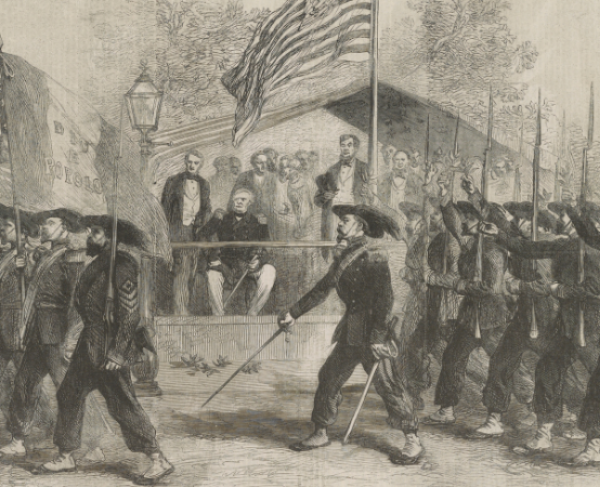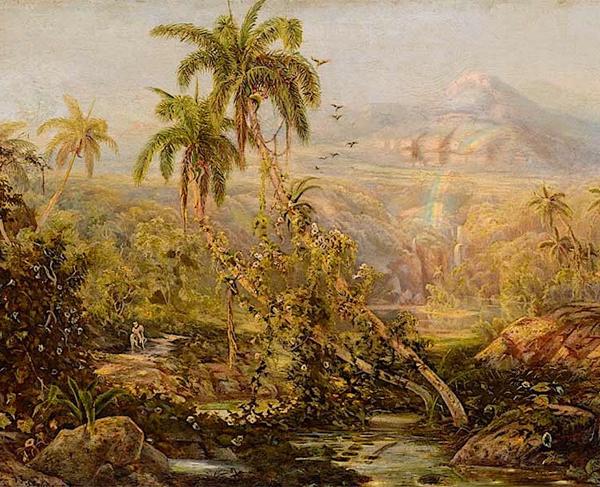Tejano Heroes of the Texas Revolution

"Remember the Alamo!"
It was the battle cry that inspired Sam Houston's army to defeat their Mexican foes at the Battle of San Jacinto. The victory eventually sent the army of General Antonio López de Santa Anna back across the Rio Grande and secured Texas's independence. It lived on in the Mexican-American War a decade afterward. And today, almost two centuries later, it may be what most Americans best remember about the Texas Revolution.
While the story of the Alamo is often told as a tidy story of courage in the face of overwhelming odds, the reality of the Texas Revolution was much more complex. The force led by Sam Houston included European immigrants, English-speaking settlers and a small number of Spanish-speaking settlers, a.k.a. Tejanos. Those who fought did so for many reasons. Land. Religion. Community. Slavery. Political ideology.
There may be no better illustration of the complexity of this conflict than the stories of the Tejanos who fought on both sides. Many faced a difficult choice between their Mexican and Texan allegiances and identities. In honor of Hispanic Heritage Month, here are three stories of Tejanos who fought for what they held dearest during the Texas Revolution. Each carved a unique path through Texan history. Each was a hero to his family and community. Each fought in service to deeply personal values and priorities.
Plácido Benavides, the Conflicted "Paul Revere of Texas"
Born and educated in Tamaulipas, Mexico, Plácido Benavides moved to Texas at the age of 18 to issue land titles and record business transactions for the colony of empresario Martín De León. In 1831, Benavides married one of De León's daughters, Agustina. Soon after, he was elected alcalde (a combination of mayor, sheriff, and judge) of Guadalupe Victoria, a town in De León's colony, which still exists in modern-day Texas as "Victoria". After his father-in-law died in 1833, Benavides continued to serve as a community leader - even as the Texas Revolution threw his allegiances and ideology into conflict.
Benavides ardently opposed Santa Anna's totalitarian presidency, hoping to see Mexico restored to a federalist government based on state and local leadership. Shortly after the war broke out, Benavides assumed command of a company from Victoria and received an officer's commission. Benavides, however, did not embrace the movement for Texas independence. Still, he continued to serve, and was famous for alerting Texas forces of Santa Anna's plans for an attack in 1836. After Texas gained its independence - despite myriad contributions to that effort - Benavides and the De León family were forced to abandon their land and possessions for exile in Louisiana, where Benavides died in 1837.
Carlos de la Garza, Mexican Loyalist and Dedicated Neighbor
Carlos de la Garza was born in Goliad, Texas, where his father was stationed as a soldier. Garza followed in his father's footsteps, serving in the Mexican army in his youth, then moving with his new wife, Tomasita, to his father's family ranch at Carlos Crossing on the San Antonio River. There, Garza operated a commissary and worked as a rancher for the community of Carlos Rancho.
When the Texas Revolution erupted, Garza felt compelled to support Mexico in word and deed. He organized and led a company called the Victoriana Guardes to serve as scouts and cavalry for the Mexican army. He offered food and shelter to Mexican citizens on his ranch. He also successfully led his men in a victory over Texas forces in the Battle of Refugio.
Yet when Mexican military leaders were deciding the fate of Fannin's command, Garza successfully pleaded for the lives of several of his Anglo-American neighbors, saving them from becoming victims of what would be known as the Goliad massacre. Garza's decision to put local allegiances above national ones was rewarded after Texas won independence, when his neighbors rose up in his defense against orders to deport him. Despite Garza's support for Santa Anna's army during the Revolution, he managed to keep his land and maintain some standing in their community after Texas gained independence from Mexico.
Juan Seguín, Statesman, Military Hero and Exile
A native of San Antonio, Texas, Juan Seguín had already served as alcalde of his hometown by the time the Revolution arrived. Seguín joined the Revolutionary effort with zeal, recruiting and leading troops throughout 1835-1836. Seguin served as courier from the Alamo. He led the only Tejano unit present at the Battle of San Jacinto where Santa Anna was defeated, and independence was eventually attained. Seguin remained in the army after the revolution. In the fall of 1837, he collected and interred the remains of the Alamo defenders. Seguín became the first Tejano to serve in the new Republic's Senate. A few years later, he was elected Mayor of San Antonio (again).
Yet even this devoted military hero and public servant couldn't navigate the mounting tensions between Anglo and Tejano settlers for long. Conflicts with Anglo settlers came to a head when Seguín was accused of supporting a Mexican invasion of Texas in 1842. Vigilantes forced Seguín to resign from his second term as mayor and flee to Mexico. There, Seguín was given the choice between imprisonment and military service as punishment for his role in the Texas Revolution. He chose the latter and found himself forced to fight against what he considered his patrimony in the Mexican-American War. After the war, Seguín attempted to settle in his homeland once more, but ongoing harassment eventually drove him back to Mexico, where he lived out the rest of his days in exile from his Tejano roots.
To learn more about Tejanos in Texas history, check out the Texas State Historical Association's Handbook of Tejano History.


